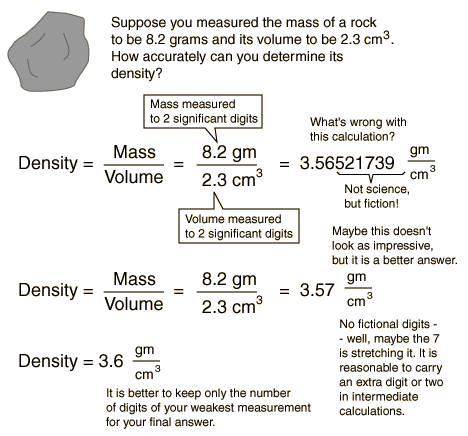Significant Figures
The significant figures of a number are those digits that carry meaning contributing to its precision.

Identifying significant digits
- All non-zero digits are considered significant.
- Zeros between non-zero digits (or other significant digits) are significant.
- Leading zeros are not significant.
- Trailing zeros in a number containing a decimal point are significant.
- The significance of trailing zeros in a number not containing a decimal point can be ambiguous.
Round down
- Whenever the digit following the last significant figure is 0, 1, 2, 3, or 4.
- If the last significant figures is an even number and the next digit is a 5, with no other non-zero digits
Round up
- Whenever the digit following the last significant figure is a 6, 7, 8, or 9.
- If the digit following the last following the last significant figure is a 5 followed by a non-zero digit.
- If the last significant is an odd number and the next digit is a 5, with no other non-zero digits.
The final result of a multiplication or division should have only as many significant figures as the number with the least number of significant figures i the calculation.
Addition and subtraction
The final result of an addition or subtraction should have only as many decimal places as the number with the least number of decimal places used in the calculation.
Let's Do A Example Now

Click to Practice on Rounding
Let's Do A Example Now

Click to Practice on Rounding

No comments:
Post a Comment